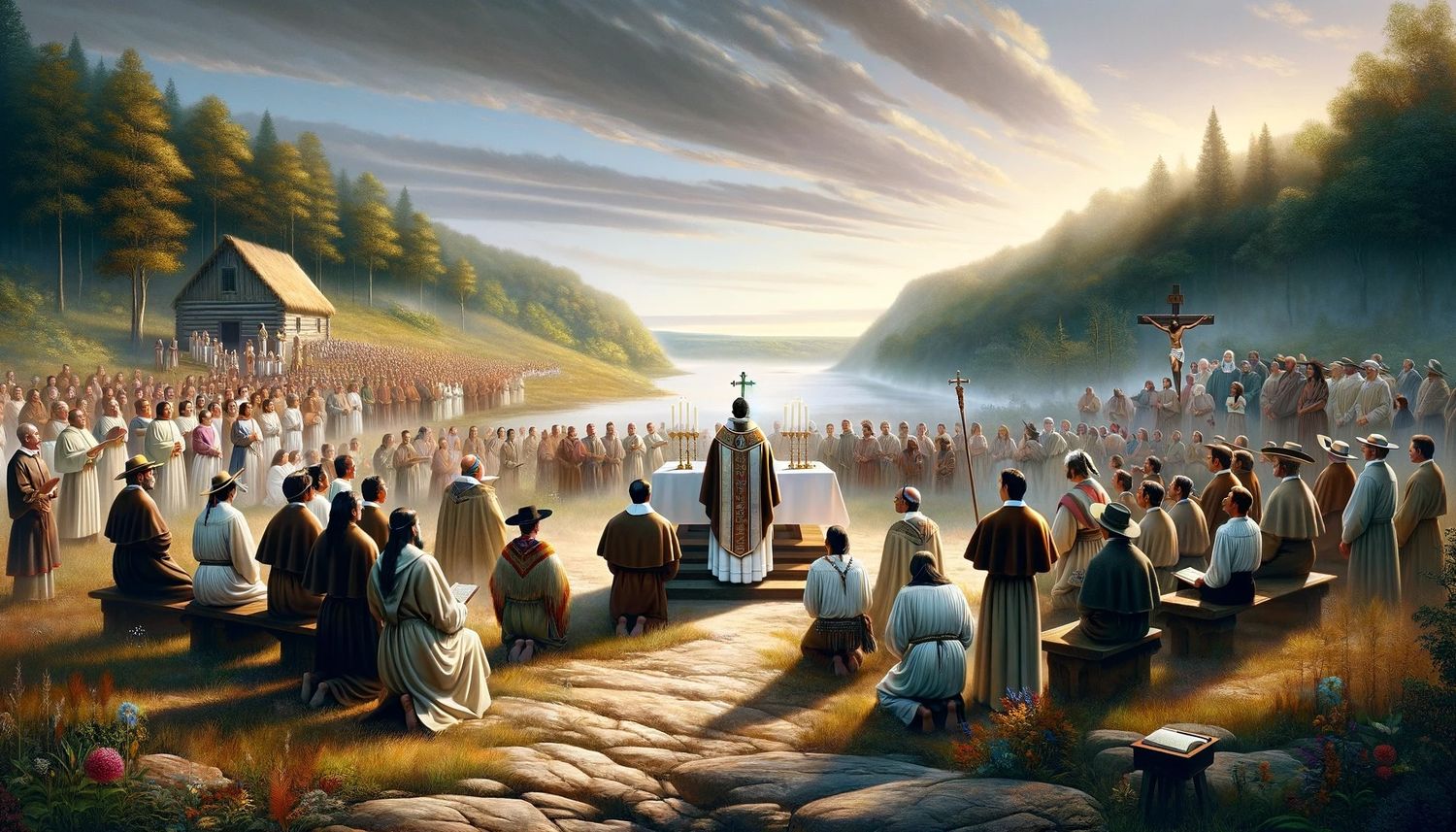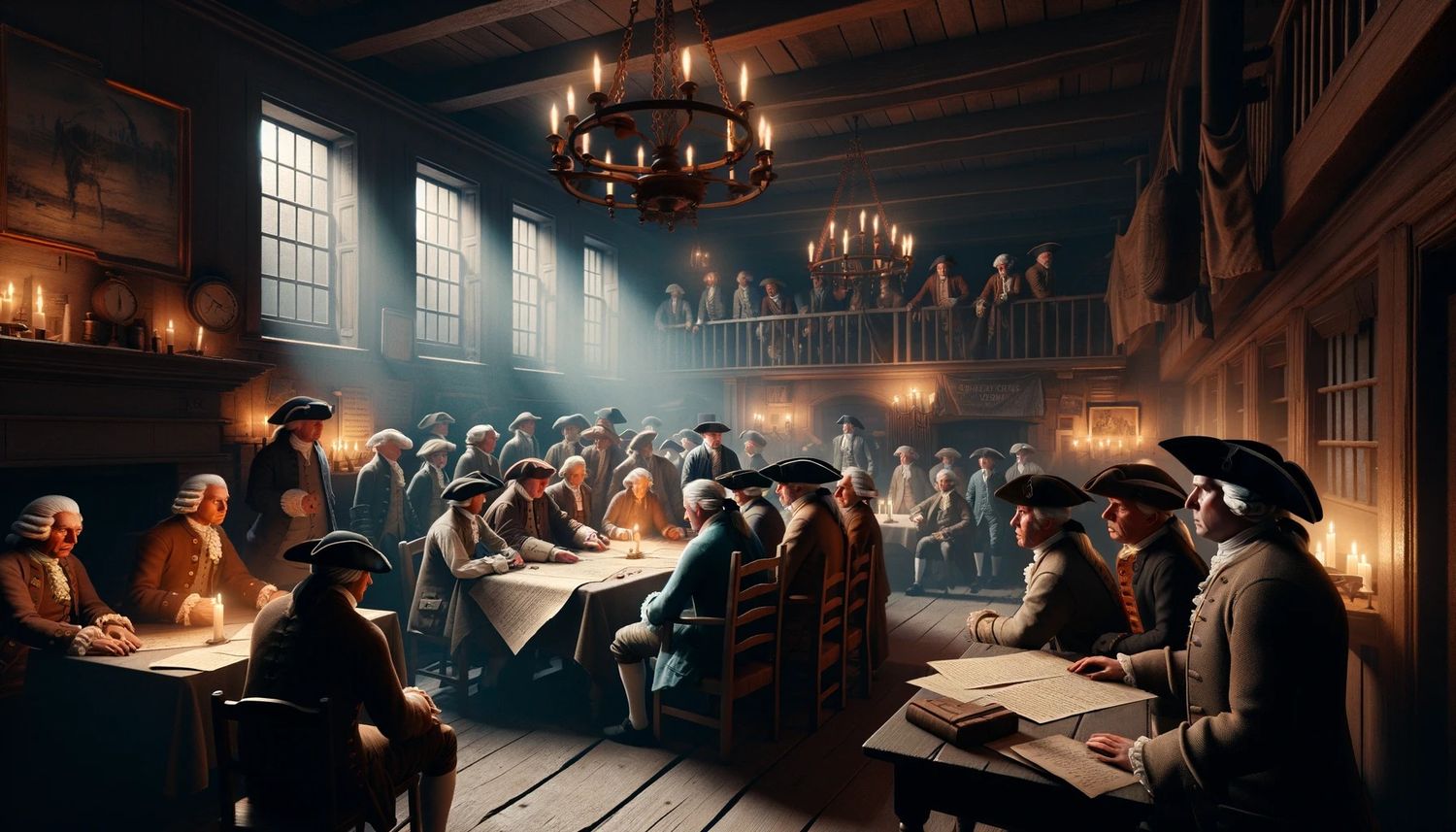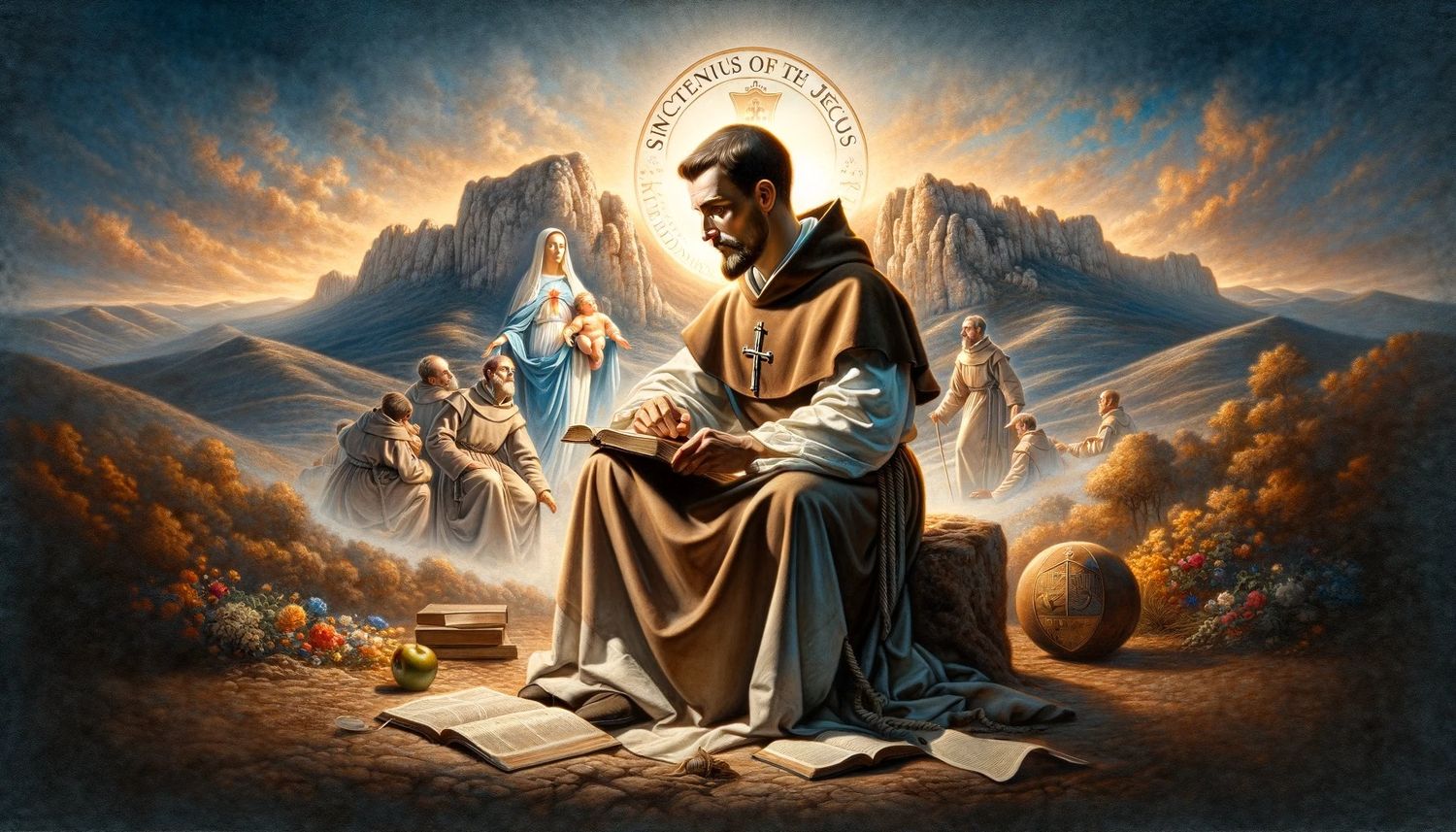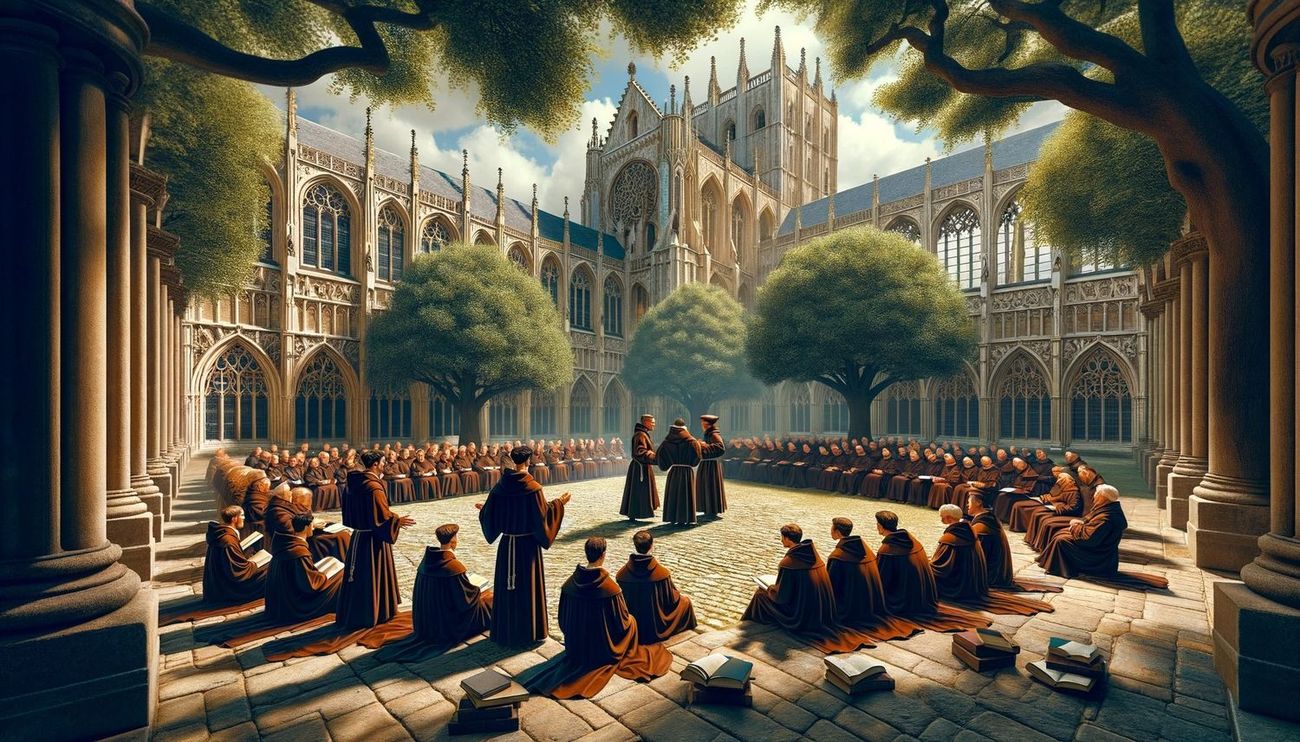Home>Theology and Spirituality>How Did Catholicism Spread To Central America
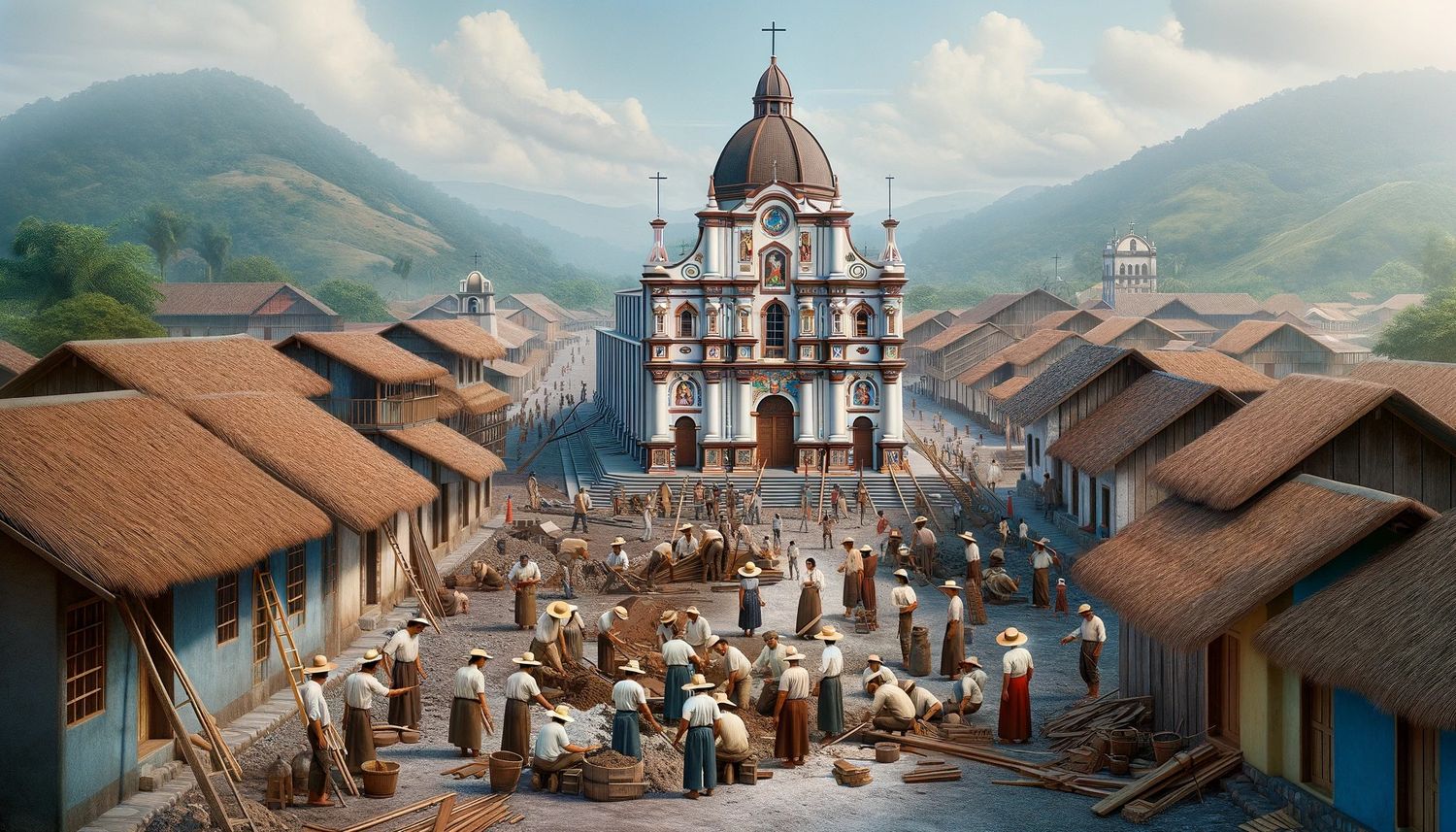

Theology and Spirituality
How Did Catholicism Spread To Central America
Published: February 17, 2024
Ericka Andersen, an editor at Christian.net, expertly merges digital strategy with content creation, focusing on faith and societal issues. Her communication skills enhance the platform's engaging narratives, fostering meaningful dialogue on belief's impact on society.
Discover the historical spread of Catholicism to Central America and its impact on theology and spirituality. Explore the cultural and religious influences that shaped the region.
(Many of the links in this article redirect to a specific reviewed product. Your purchase of these products through affiliate links helps to generate commission for Christian.net, at no extra cost. Learn more)
Table of Contents
Introduction
Central America is a region rich in history, culture, and spirituality. One of the most significant influences on the spiritual landscape of this area is the spread of Catholicism. The arrival of Catholicism in Central America is a complex and multifaceted historical process that intertwines with the region's colonization, cultural exchange, and religious transformation.
The spread of Catholicism in Central America is a captivating tale that encompasses the convergence of indigenous beliefs and Spanish colonialism. Understanding the journey of Catholicism in this region provides valuable insights into the interplay between religion, culture, and societal development.
As we delve into the historical narrative of Catholicism in Central America, we will uncover the pivotal role of Spanish conquistadors and Catholic missionaries in disseminating the faith across the region. Moreover, we will explore the enduring impact of Catholicism on the cultural and societal fabric of Central America, shedding light on the profound influence it has exerted over the centuries.
Join us on a compelling journey through time as we unravel the captivating story of how Catholicism took root and flourished in the heart of Central America, leaving an indelible mark on the region's spiritual and cultural identity.
Read more: Where Did Catholicism Spread
Early Spread of Catholicism in Central America
The early spread of Catholicism in Central America can be traced back to the arrival of Spanish explorers and colonizers in the 16th century. As these intrepid voyagers ventured into the uncharted territories of the New World, they carried with them not only the ambition of conquest but also the fervent zeal to spread the Catholic faith. The Spanish conquest of Central America, led by figures such as Hernán Cortés and Pedro de Alvarado, served as a catalyst for the introduction of Catholicism to the indigenous populations inhabiting the region.
Upon setting foot on the shores of Central America, the Spanish conquistadors embarked on a mission to assert their dominion over the land and its inhabitants. Alongside their quest for territorial expansion, they sought to propagate the tenets of Catholicism, viewing it as a means to consolidate their authority and instill European cultural and religious norms in the newly discovered territories.
The early spread of Catholicism in Central America was characterized by a complex interplay of religious fervor, cultural encounters, and power dynamics. Spanish missionaries, accompanied by the conquistadors, played a pivotal role in disseminating the Catholic faith among the indigenous communities. They endeavored to convert the native populations to Catholicism, often employing a combination of persuasion, coercion, and the allure of material incentives.
The indigenous peoples of Central America, with their rich tapestry of spiritual beliefs and practices, encountered the imposing presence of Catholicism with a mixture of curiosity, resistance, and adaptation. The syncretic nature of the early spread of Catholicism in Central America gave rise to a unique fusion of indigenous traditions and Catholic rituals, shaping the religious landscape of the region in profound ways.
The establishment of missions and religious institutions became instrumental in solidifying the presence of Catholicism in Central America. These centers of religious activity served as hubs for evangelization, education, and the consolidation of Spanish influence. The early spread of Catholicism in Central America thus unfolded against the backdrop of intricate interactions between the Spanish colonizers and the indigenous populations, leaving an indelible imprint on the spiritual and cultural heritage of the region.
The enduring legacy of the early spread of Catholicism in Central America is evident in the religious practices, traditions, and iconography that permeate the cultural fabric of the region to this day. The fusion of Catholic rituals with indigenous customs has given rise to vibrant expressions of faith that reflect the intricate interweaving of diverse cultural elements. This rich tapestry of religious syncretism stands as a testament to the enduring impact of the early spread of Catholicism in shaping the spiritual identity of Central America.
In the subsequent sections, we will delve deeper into the role of Spanish conquistadors and Catholic missionaries in spreading Catholicism, as well as the profound influence of Catholicism on the cultural and societal dynamics of Central America. Join us as we unravel the captivating narrative of how Catholicism took root and flourished in the heart of Central America, leaving an indelible mark on the region's spiritual and cultural landscape.
Role of Spanish Conquistadors in Spreading Catholicism
The role of Spanish conquistadors in spreading Catholicism across Central America was pivotal in shaping the religious and cultural landscape of the region. As agents of the Spanish Crown, the conquistadors embarked on ambitious expeditions to conquer and colonize the New World, driven by a potent blend of territorial ambition, religious zeal, and the fervent desire to expand the influence of Catholicism.
Upon their arrival in Central America, the Spanish conquistadors, led by figures such as Hernán Cortés and Pedro de Alvarado, sought to assert their dominion over the indigenous populations while simultaneously advancing the cause of Catholicism. Their expeditions were characterized by a dual mission: the acquisition of territory and the propagation of the Catholic faith. This dual mandate underscored the intertwined nature of conquest and evangelization, as the conquistadors viewed the spread of Catholicism as a means to solidify their authority and impose European cultural and religious norms on the indigenous inhabitants.
The Spanish conquistadors employed various strategies to disseminate Catholicism among the indigenous communities. They often worked in tandem with Catholic missionaries, leveraging their military prowess and the allure of material incentives to compel the native populations to embrace the Catholic faith. The conquest of Central America thus became intertwined with the imposition of Catholicism, as the conquistadors sought to establish a religious and cultural hegemony that mirrored the norms of the Spanish homeland.
The establishment of missions and religious institutions played a crucial role in the conquest-driven evangelization efforts. These centers of religious activity served as hubs for the dissemination of Catholic teachings, the conversion of indigenous peoples, and the consolidation of Spanish influence. The presence of Spanish conquistadors in Central America thus became synonymous with the pervasive spread of Catholicism, as they wielded their authority to enforce religious conversion and suppress indigenous spiritual practices perceived as incompatible with Catholic doctrine.
The legacy of the Spanish conquistadors' role in spreading Catholicism in Central America is deeply intertwined with the region's historical narrative. The enduring impact of their endeavors is evident in the enduring influence of Catholicism on the cultural, religious, and societal dynamics of Central America. The fusion of Spanish colonialism and Catholic evangelization left an indelible imprint on the spiritual identity of the region, shaping its religious practices, traditions, and collective memory.
The role of Spanish conquistadors in spreading Catholicism stands as a testament to the complex interplay of conquest, religious fervor, and cultural transformation that unfolded in the heart of Central America. Their endeavors laid the foundation for the enduring presence of Catholicism in the region, leaving an indelible mark on its spiritual and cultural heritage.
Influence of Catholic Missionaries in Central America
The influence of Catholic missionaries in Central America during the colonial era was profound and far-reaching, leaving an enduring imprint on the spiritual, cultural, and societal dynamics of the region. As emissaries of the Catholic Church, missionaries played a pivotal role in the dissemination of the Catholic faith, the conversion of indigenous populations, and the establishment of religious institutions that became integral to the fabric of Central American society.
Catholic missionaries, driven by a fervent zeal to spread the Gospel, embarked on arduous journeys into the heart of Central America, venturing into uncharted territories and encountering diverse indigenous communities. Their mission was twofold: to evangelize the native populations and to establish a religious infrastructure that would solidify the presence of Catholicism in the region. Armed with unwavering conviction and a commitment to their calling, these missionaries navigated the complexities of cultural exchange, linguistic diversity, and the formidable challenges posed by unfamiliar environments.
The endeavors of Catholic missionaries in Central America were characterized by a multifaceted approach to evangelization. They sought to communicate the teachings of Catholicism in a manner that resonated with the spiritual sensibilities of the indigenous peoples, often drawing parallels between Christian doctrine and indigenous beliefs to facilitate the process of conversion. Through their interactions with the native populations, missionaries endeavored to understand and respect the existing cultural and spiritual traditions, recognizing the intrinsic value of indigenous customs while advocating for the acceptance of Catholic teachings.
The establishment of missions and religious settlements became instrumental in the missionary efforts to propagate Catholicism in Central America. These centers of religious activity served as focal points for evangelization, education, and the integration of indigenous communities into the fold of the Catholic Church. Missionaries provided spiritual guidance, imparted religious instruction, and facilitated the assimilation of indigenous practices into the framework of Catholic rituals, fostering a syncretic expression of faith that reflected the convergence of diverse cultural elements.
The enduring legacy of Catholic missionaries in Central America is evident in the enduring influence of Catholicism on the region's cultural and spiritual landscape. The fusion of Catholic teachings with indigenous traditions gave rise to a rich tapestry of religious syncretism, shaping the collective identity of Central American society. The imprint of Catholic missionaries endures in the religious practices, traditions, and iconography that permeate the cultural fabric of the region, serving as a testament to the enduring impact of their evangelistic endeavors.
The influence of Catholic missionaries in Central America stands as a testament to the transformative power of faith, cultural exchange, and the indomitable spirit of those who dedicated their lives to the propagation of the Catholic faith. Their legacy continues to resonate through the ages, underscoring the enduring bond between Catholicism and the spiritual heritage of Central America.
Impact of Catholicism on Central American Culture and Society
The impact of Catholicism on Central American culture and society has been profound, shaping the spiritual, artistic, and social dimensions of the region in enduring ways. From the early colonial period to the present day, Catholicism has permeated every facet of Central American life, leaving an indelible mark on its cultural identity.
Spiritual and Religious Practices
Catholicism has become deeply intertwined with the spiritual fabric of Central America, influencing religious practices, rituals, and beliefs. The fusion of Catholic teachings with indigenous traditions has given rise to a vibrant expression of faith that reflects the syncretic nature of Central American spirituality. The celebration of religious festivals, the veneration of saints, and the observance of Catholic sacraments have become integral components of Central American religious life, embodying the fusion of diverse cultural elements within the framework of Catholicism.
Art, Architecture, and Iconography
The influence of Catholicism is palpable in the artistic and architectural heritage of Central America. Magnificent cathedrals, adorned with intricate religious iconography, stand as testaments to the enduring legacy of Catholicism in the region. The fusion of European artistic traditions with indigenous craftsmanship has given rise to a distinctive aesthetic that reflects the convergence of diverse cultural influences. Religious art, including paintings, sculptures, and religious artifacts, serves as a visual representation of the profound impact of Catholicism on Central American artistic expression.
Social and Ethical Values
Catholicism has played a pivotal role in shaping the social and ethical values of Central American society. The emphasis on compassion, solidarity, and social justice, inherent to Catholic teachings, has permeated the collective consciousness of the region. Central American communities have drawn upon Catholic principles to advocate for social reform, human rights, and the alleviation of poverty, reflecting the enduring influence of Catholicism on the pursuit of social justice and ethical responsibility.
Cultural Traditions and Festivities
Catholicism has become interwoven with the cultural traditions and festivities of Central America, giving rise to a rich tapestry of religious celebrations and communal rituals. The observance of religious holidays, such as Semana Santa (Holy Week) and the Feast of the Virgin of Guadalupe, serves as a testament to the enduring legacy of Catholicism in shaping the cultural calendar of the region. These vibrant festivities embody the fusion of Catholic religious observances with indigenous customs, reflecting the enduring impact of Catholicism on Central American cultural traditions.
The impact of Catholicism on Central American culture and society is a testament to the enduring legacy of faith, cultural exchange, and the indomitable spirit of those who have embraced the Catholic faith. The fusion of Catholicism with indigenous traditions has given rise to a unique cultural identity that reflects the convergence of diverse cultural elements within the framework of Catholic spirituality. As Central America continues to evolve, the enduring influence of Catholicism remains an integral part of its cultural and spiritual heritage.
Conclusion
The spread of Catholicism to Central America stands as a testament to the intricate interplay of historical, cultural, and spiritual forces that have shaped the region's identity. From the early encounters between Spanish conquistadors and indigenous populations to the enduring legacy of Catholic missionaries, the journey of Catholicism in Central America has been marked by a complex tapestry of religious syncretism, cultural exchange, and societal transformation.
The early spread of Catholicism in Central America, propelled by the arrival of Spanish explorers and colonizers, set in motion a profound convergence of diverse spiritual traditions. The fusion of Catholic teachings with indigenous beliefs gave rise to a rich tapestry of religious syncretism, shaping the spiritual landscape of the region in profound ways. The enduring legacy of this syncretic expression of faith is evident in the religious practices, traditions, and iconography that permeate the cultural fabric of Central America, reflecting the enduring influence of Catholicism on the region's spiritual identity.
The role of Spanish conquistadors in spreading Catholicism underscored the intertwined nature of conquest and evangelization, as the imposition of Catholicism became synonymous with the consolidation of Spanish authority in Central America. The enduring impact of their endeavors is palpable in the enduring influence of Catholicism on the cultural, religious, and societal dynamics of the region, shaping its religious practices, traditions, and collective memory.
Catholic missionaries, driven by a fervent zeal to spread the Gospel, played a pivotal role in the dissemination of the Catholic faith, the conversion of indigenous populations, and the establishment of religious institutions that became integral to the fabric of Central American society. Their legacy continues to resonate through the ages, underscoring the enduring bond between Catholicism and the spiritual heritage of Central America.
The impact of Catholicism on Central American culture and society has been profound, shaping the spiritual, artistic, and social dimensions of the region in enduring ways. From the fusion of Catholic teachings with indigenous traditions to the influence on art, architecture, and social values, Catholicism has left an indelible mark on the cultural identity of Central America.
In conclusion, the journey of Catholicism in Central America is a testament to the enduring resilience of faith, the transformative power of cultural exchange, and the indomitable spirit of those who have embraced the Catholic faith. As Central America continues to evolve, the enduring influence of Catholicism remains an integral part of its cultural and spiritual heritage, reflecting the convergence of diverse cultural elements within the framework of Catholic spirituality.
